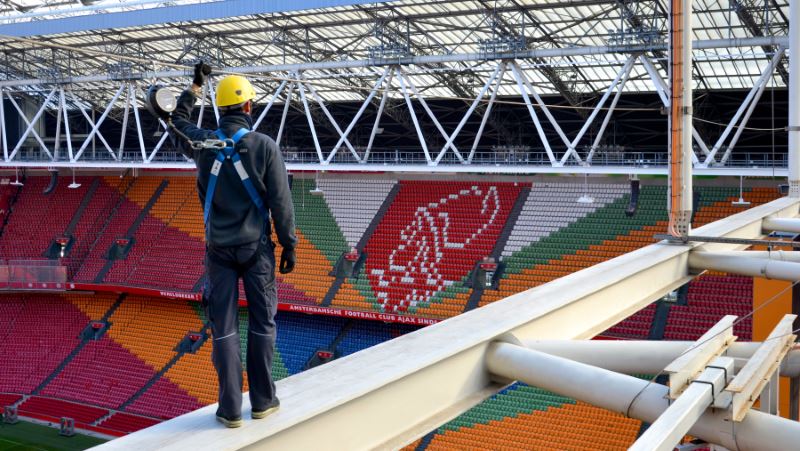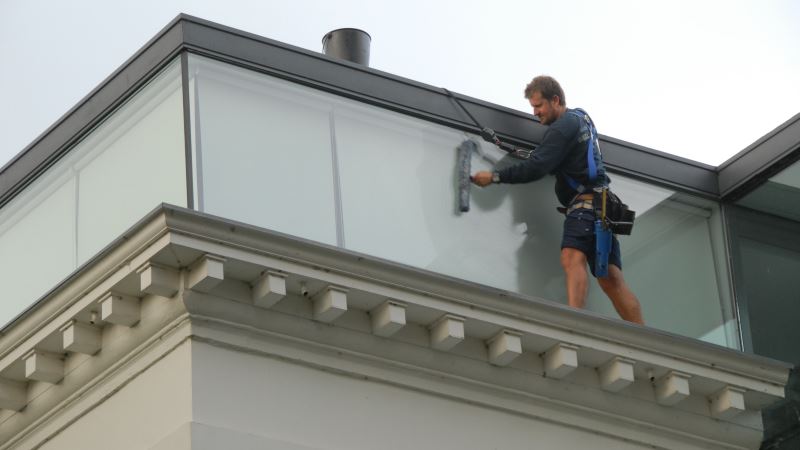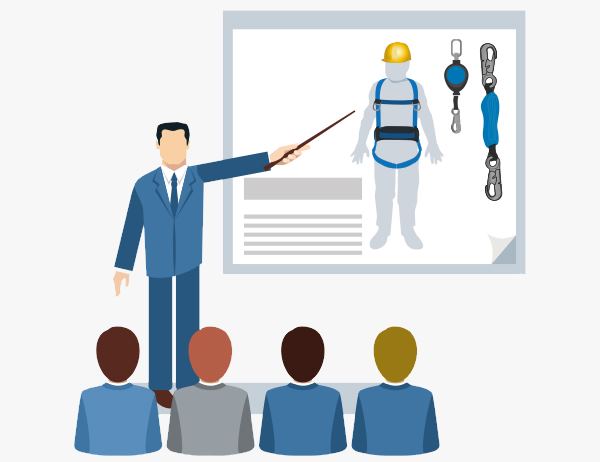
Many workers, from roofers to welders and window cleaners to carpenters, often work at height or even work at height every day. Of course, these workers are aware of the dangers and generally take measures to protect themselves from a fall. But, besides the situations at the workplace itself that can add to the risk of falling, there is another danger lurking for people who often work at height: getting used to the risks of working at height and unintentionally develop (bad) habits.
Getting used to risks
The first time of the most basic things in life is a bit scary, because of possible dangers and unfamiliarity: riding your bike without training wheels, the first swimming lessons in the deep pool, your first driving lesson etc. After some time, you get used to it, your skills improve and at some point it’s everyday business and you might even go and take even more risks. One mistake and you might end-up with a black eye, bruised knee or worse. But, you have done it so many times that your self-confidence is sky high.

Occupational risks
Now, these comparisons may not be 100% translatable to occupational (fall) hazards, but they illustrate the subject we want to address. In any work environment, risks are present. Whether it’s the risk of falling off the stairs at the office or falling from a 300 meter (985 ft) tall skyscraper to the ground. Especially in construction, the risks are high and accidents happen a lot due to the many different workers, ever changing environment, heavy equipment and unfinished structural parts.
To prevent these accidents and eliminate risks at the workplace, authorities have drawn laws, rules and requirement that prescribe safety measures to protect employees. Because everyone wants to return home after a working day, right?
The danger of habituation
The first day of working at height can be as exciting as a first driving lesson: get training in safety requirements, how to work with a fall protection system and/or personal protective equipment and then put it into practice on a roof, for example.
During the first period of working at height, rules and requirements are followed precisely, fall protection is used and effort is put into it to ensure a safe working situation. But, after a while people get comfortable when working at height and the focus may shift from putting effort in safety to putting it in getting the work done faster: pulling on a safety harness, attaching yourself to an anchor point etc. for just a small job on a 3 meter tall extension of a house may seem too much hassle. And by the way, nothing has happened ever before and you’ve been doing this for so long. Until something goes horribly wrong…
We could describe multiple situations like described above occur, where fall protection systems are used incorrectly, not used at all and rules are ignored regarding safe working at height. Note that we don’t want to accuse people, but we all know these situations happen (unknowingly). Compare it to a two minute drive in a car without wearing a seat-belt: what can happen?
The reason for these dangerous situations from happening is habituation: at some point, people overestimate themselves, some heights are perceived as harmless and fall protection equipment ‘complicates’ the work that has to be done. Somehow, this is natural to people and the only way to battle this is to create awareness again of the dangers and the necessity of fall protection. How is this awareness created again? Well, one way is to experience an accident happening to a colleague. At that point, all workers are reminded of the dangers again. Luckily, there is another way to do it: training.

Training, training, training
(Annual) training is crucial in keeping occupational safety and the necessity of fall protection top of mind with employees. During these trainings, the risks and dangers are highlighted once more. Furthermore, employees are provided with the latest developments in fall protection and how to use it properly.
The power of repetition helps workers in preventing them to become careless, to forget important elements of the proper use of fall protection and to underestimate the dangers of work at height.
Risk Assessment
Other ways to stay aware of the risks when working at height is to perform a Risk Assessment and Evaluation before any work starts. Following this assessment, the necessary safety measure are determined and installed.
When a fall protection system is in place, those who are going to use it have to perform a Last Minute Risk Assessment (LMRA) before EACH time they will use the system and corresponding Personal Protective Equipment (PPE). This way, they are aware of any possible dangers and actively thinking about how to prevent the risk of falling.
Free download
Download a free poster here to decrease the risk of habituation and stay reminded of all the risks!

3 Comments. Leave new
the main problem in my country, but not all the project, have experience is the gears for conduct training and then, the total gears which should be use is very expensive this is the big problem in the company where they will follow the regulation again the financial matters.
It took years for car drivers to get used to using their seat belts. Drivers were educated on a regular basis that failure to comply could result in death or serious injury. Misuse of fall protection equipment or failure to wear it can end the same way. We need to train workers on the true role that fall protection equipment plays. It is your last resort when a fall occurs or it restrains you from falling over the edge when you before distracted or disoriented. In an aerial work platform it can also prevent ejection from the device.
The Content shared over here shows the importance of risk knowing . Thanks for sharing .